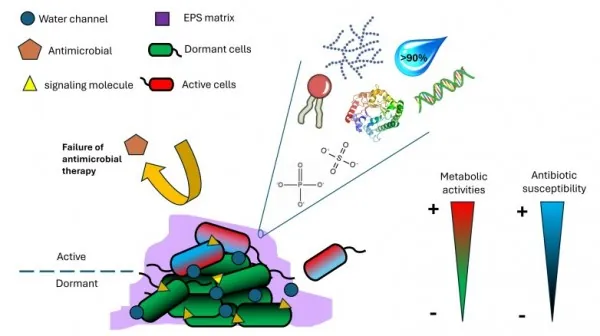
Battling Biofilms: Innovative Approaches to Ensure Food Safety
2024-09-23
Introduction
In a groundbreaking discovery, a research team has spotlighted the critical challenge of biofilm formation on food-contact surfaces throughout the food supply chain. This phenomenon not only provides a breeding ground for harmful bacteria but also elevates the risk of foodborne illnesses, significantly impacting food quality and safety. As food safety continues to be a global concern, the urgency for innovative solutions to combat biofilm formation has never been more relevant.
Understanding Biofilms
Biofilms consist of complex communities of microorganisms encased in a protective matrix, allowing bacteria to persist and thrive on various surfaces, including metal, plastic, and glass. These resilient biofilms act as reservoirs for dangerous pathogens, increasingly contaminating both raw materials and processed food products. The result? Increased spoilage, disease transmission, and the alarming spread of antibiotic-resistant bacteria.
Impact on the Food Industry
A concerning statistic highlights the gravity of this issue: around 90% of microorganisms in the meat industry can form biofilms, leading to substantial annual financial losses estimated at $150 million. Add to this the detrimental effect on dairy products, where biofilm formation contributes to a decline in product quality and safety, and it becomes clear that addressing biofilms is crucial for the health of consumers and the economy alike.
Challenges in Cleaning
Recent studies indicate that common cleaning and disinfecting methods fall short when tackling biofilms, with bacteria embedded within these structures exhibiting resistance up to 1,000 times greater than their free-floating counterparts. Alarmingly, in dairy processing, certain conditions further facilitate biofilm development, thereby jeopardizing the integrity of milk products.
Innovative Strategies
In light of these pressing challenges, researchers are exploring numerous innovative strategies to combat biofilm formation. Promising avenues include edible coatings derived from natural materials like alginate and chitosan, which serve dual purposes by acting as barriers against oxygen and moisture while simultaneously reducing microbial contamination. Additionally, antibiofilm-coated surfaces release antimicrobial agents, effectively blocking bacterial adhesion.
The Role of Technology
Highlighting the potential of modern technology, the application of nanosensors represents another frontier in biofilm management. These devices are capable of providing sensitive, real-time monitoring of biofilm presence, enabling prompt intervention to prevent contamination before it spirals out of control.
Expert Insight
Dr. John Smith, the lead researcher of the study, aptly noted, “Biofilms are a formidable barrier in food safety due to their resilience against traditional cleaning measures and their role in harboring pathogens. Addressing this issue requires innovative strategies that target biofilm prevention, detection, and eradication to protect public health and maintain food quality.”
Conclusion
The fight against biofilm formation on food-contact surfaces remains critically important for ensuring food safety. By harnessing innovative strategies such as edible coatings, advanced antibiofilm surfaces, and state-of-the-art monitoring technologies, the food industry will be better equipped to safeguard public health, minimize economic losses, and enhance food quality, all while meeting the escalating demand for safe and sustainable food production practices.
As researchers continue to unveil new insights and strategies, the future of food safety looks promising. Stay informed—this battle against biofilms is evolving, and the solutions discovered today could redefine the standards for food safety tomorrow.




 Brasil (PT)
Brasil (PT)
 Canada (EN)
Canada (EN)
 Chile (ES)
Chile (ES)
 España (ES)
España (ES)
 France (FR)
France (FR)
 Hong Kong (EN)
Hong Kong (EN)
 Italia (IT)
Italia (IT)
 日本 (JA)
日本 (JA)
 Magyarország (HU)
Magyarország (HU)
 Norge (NO)
Norge (NO)
 Polska (PL)
Polska (PL)
 Schweiz (DE)
Schweiz (DE)
 Singapore (EN)
Singapore (EN)
 Sverige (SV)
Sverige (SV)
 Suomi (FI)
Suomi (FI)
 Türkiye (TR)
Türkiye (TR)